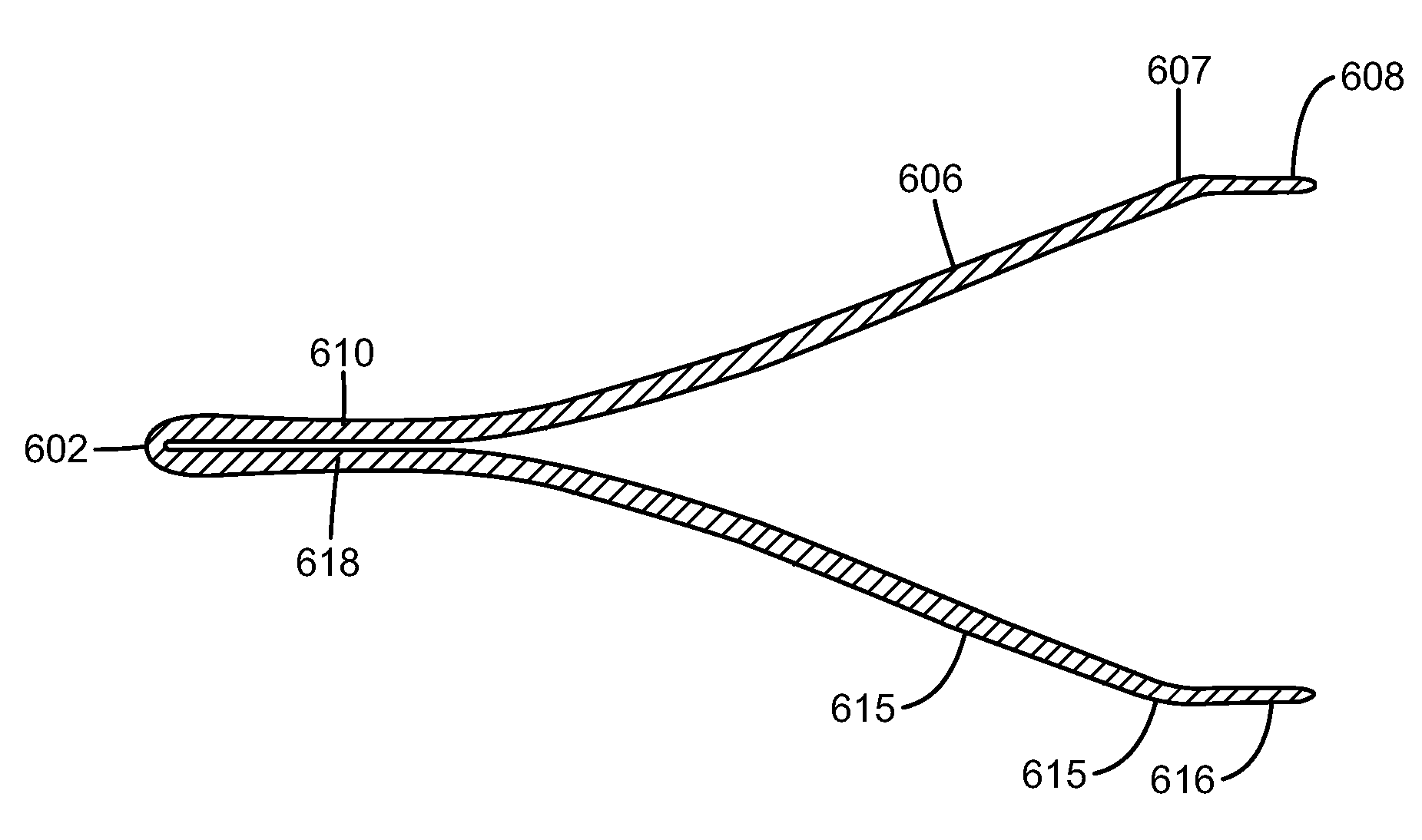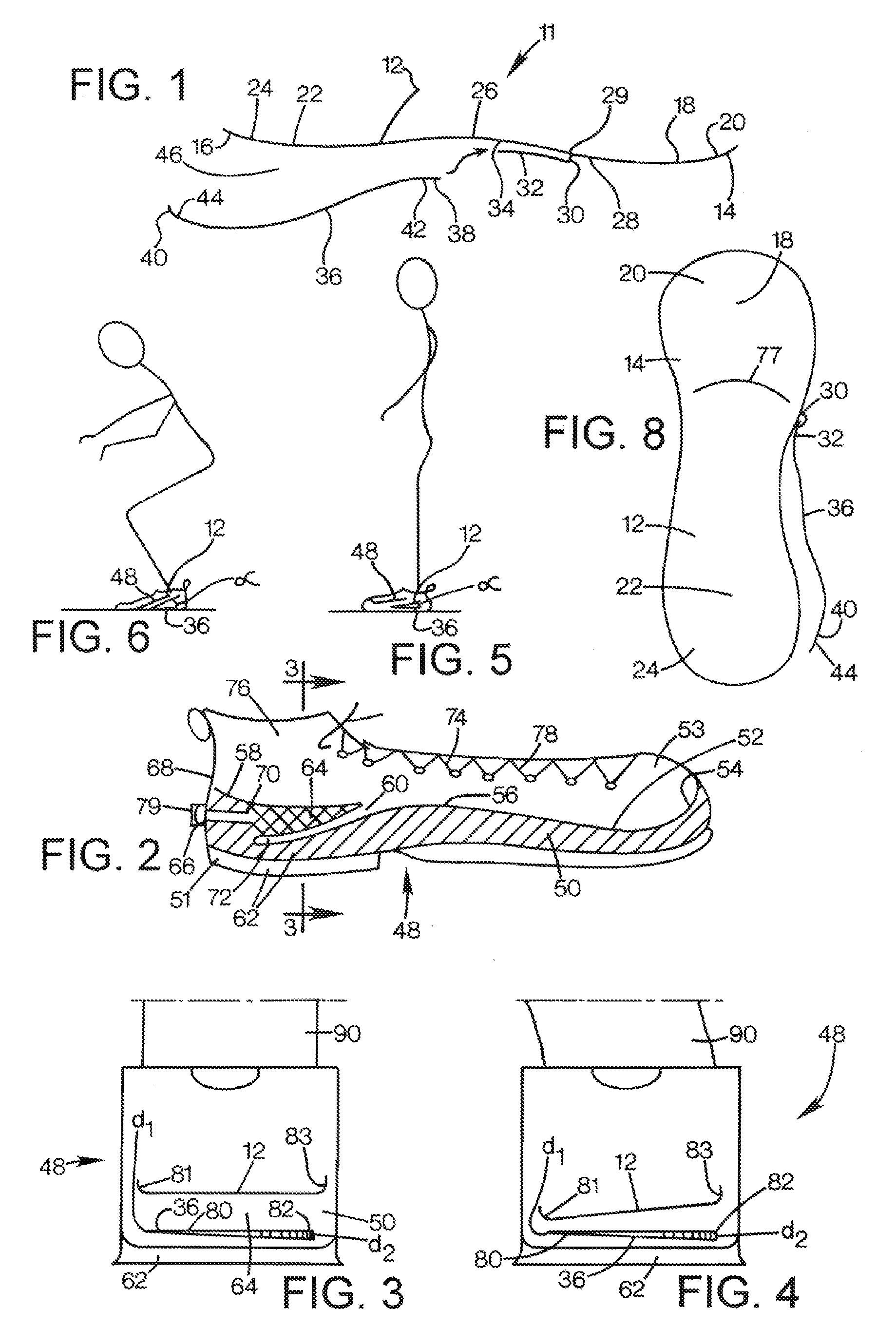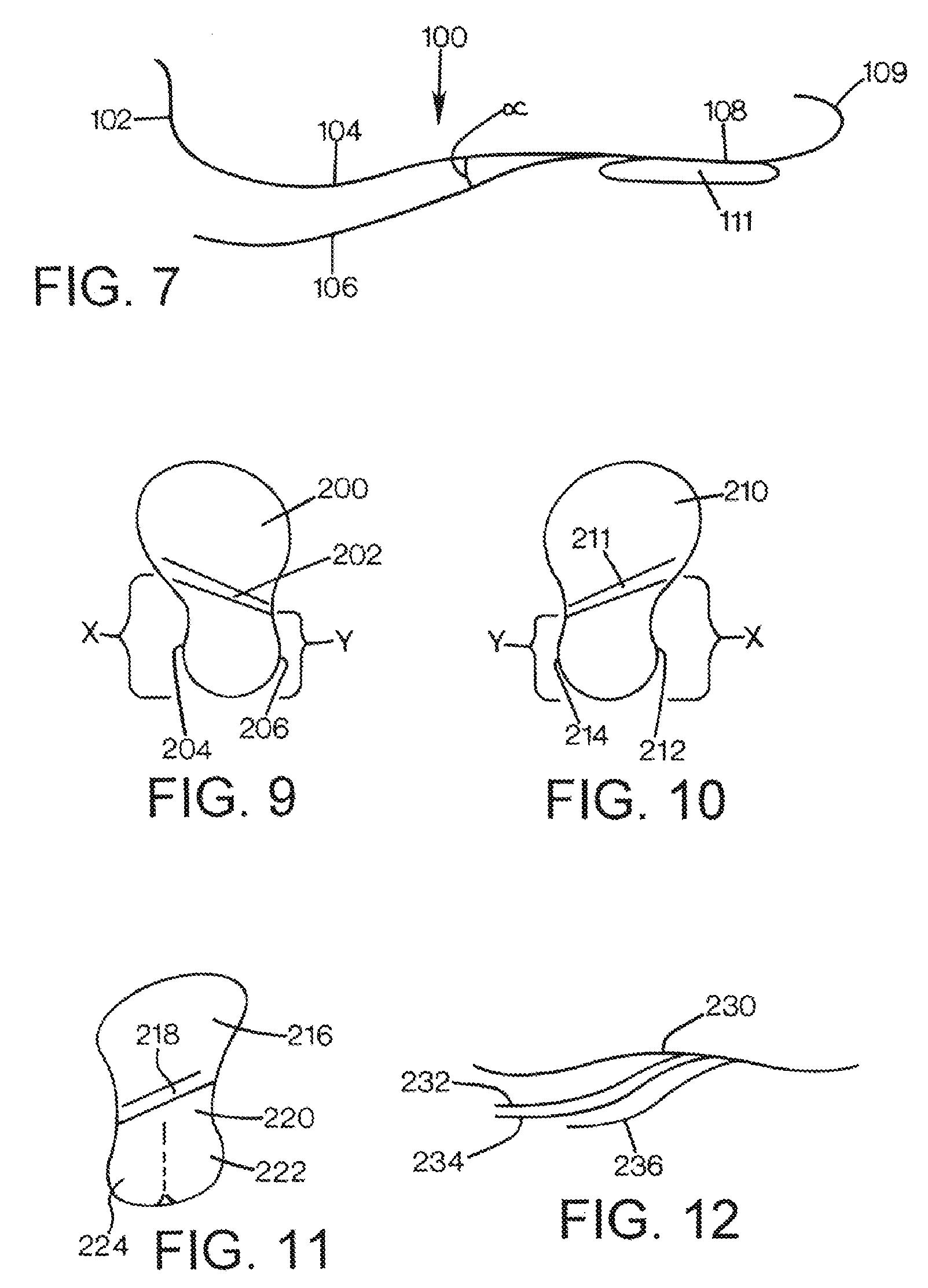Shoe system with a resilient shoe insert
a shoe system and resilient technology, applied in the field of resilient shoe spring system, can solve the problems of reducing the biomechanical effect, affecting so as to improve the walking and running economy, improve the stability and cushioning of the biomechanical shoe, and increase the thickness of the shoe sol
- Summary
- Abstract
- Description
- Claims
- Application Information
AI Technical Summary
Benefits of technology
Problems solved by technology
Method used
Image
Examples
second embodiment
[0041]FIG. 9 is a top view of the shoe insert of the present invention. A shoe insert 200 has a transition area 202 (that is equivalent to the transition area 77 of FIG. 8) that extends at an angle so that a distance (x) at an inside 204 of the shoe insert 200 is longer than a distance (y) at an outside 206. In other words, the flexible member is longer at the inside 204 than the outside 206 so that the inside 204 may flex (as shown in FIG. 4) while the outside 206 is relatively stiff. Similarly, FIG. 10 shows a top view of a shoe insert 210 for the left shoe that has a transition area 211 and an inside 212 that has a length (x) that is longer than a length (y) of an inside 214. FIG. 11 is a bottom view of a third embodiment of the present invention.
third embodiment
[0042]A shoe insert 216 has an angular transition area 218 in addition to a flexible member 220 that has a softer inside portion 222 and a stiffer outside portion 224. In the third embodiment, it is not necessary that the transition area extends at an angle because the inside portion 222 is already softer than the outside portion 224. FIG. 12 is a side view of a shoe insert 230 having a plurality of flexible members 232, 234, 236 attached to an underside 238 of the shoe insert 230 so that both the resiliency and the resiliency on the inside and the outside may be adjusted to the specific needs of the user of the shoe insert 230.
fifth embodiment
[0043]FIGS. 13 and 14 show the present invention. A shoe 300 has a shoe sole 302 including an upper layer 303 with a shoe insert 304 integrated with or built into the sole 302. The shoe 300 has a toe portion 330 and a heel portion 332 and shoe sole 302 has a bottom side 305. The insert 304 has a relatively stiff upper segment 306 and a bendable lower segment 308 that is attached to a lower side 310 of the segment 306 at a mid-section 312 of the upper segment 306. The segment 306 is, preferably, attached to a back piece 301 that is disposed at the upper segment 303 adjacent to a backside 309 of the shoe 300. The upper segment 306 and the lower segment 308 have a space 307 defined therebetween. The space 307 may be filled with air or a very compressible and expandable material. The space 307 may be completely or partially filled with a material. For example, the material may include segments of an elastomeric material to change the spring characteristics of the insert 304. Stiffer ela...
PUM
 Login to View More
Login to View More Abstract
Description
Claims
Application Information
 Login to View More
Login to View More - R&D
- Intellectual Property
- Life Sciences
- Materials
- Tech Scout
- Unparalleled Data Quality
- Higher Quality Content
- 60% Fewer Hallucinations
Browse by: Latest US Patents, China's latest patents, Technical Efficacy Thesaurus, Application Domain, Technology Topic, Popular Technical Reports.
© 2025 PatSnap. All rights reserved.Legal|Privacy policy|Modern Slavery Act Transparency Statement|Sitemap|About US| Contact US: help@patsnap.com



